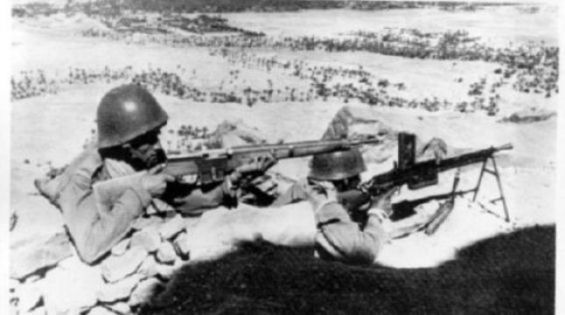A CIA document dated October 18, 1963, addressing the «implications of ongoing frictions along the Moroccan-Algerian border», discussed the Sand War that erupted between the two countries on October 8 of the same year.
Declassified in 2004, the document indicates that clashes between Morocco and Algeria «are likely to continue» and thus develop «new areas of hostility» along the border. However, «it seems that the outbreak of open war is unlikely, given the limited capabilities of both armies».
«The Moroccan army consists of 32,500 men, organized into eighteen infantry battalions, three cavalry and artillery battalions, one armored battalion, one engineering battalion, one light security group, and two air squadrons, with support units. It has 105 aircraft», the CIA specifies.
Although the Algerian army has 60,000 men, it could potentially develop into a diversified force of 200,000 soldiers. That said, «it remains disadvantaged compared to the Moroccan side in terms of organization, training, and equipment, in addition to the lack of air support and its very limited air surveillance capability», as well as «a severe shortage of transport», the same source emphasizes.
«If limited hostilities continue or escalate into more serious confrontations at points other than Hassi Beida and Tinjoub, where current skirmishes are taking place, a diplomatic rupture is likely to occur».
«Even if the current crisis subsides, Morocco and Algeria will remain highly distrustful of each other», the American intelligence further explains. Moreover, they estimate that the continuation of tensions with Algeria «would weaken opposition in Morocco and strengthen the authority of King Hassan II».
Also, Algeria's difficulties with Rabat could lead to «new hostilities» against Ahmed Ben Bella and Houari Boumediene, exacerbated by mobilization and «already existing frictions between former members of the rebel army abroad and those inside, which would prevent the development of an effective and reliable Algerian army».
Algeria eyes Figuig in the aftermath of the Sand War
Another CIA document, dated October 21, 1963, and declassified in 2015, indicates that «Algeria is preparing to seize the Moroccan region of Figuig, in response to the loss of Hassi Beida and Tinjoub». According to this source, military hostilities would not, however, prevent «ongoing diplomatic efforts to reach a ceasefire».
Indeed, Abdelaziz Bouteflika, then Algerian Minister of Foreign Affairs, made an unexpected visit to Rabat, «accompanied by his Ethiopian counterpart», in «a surprising move that raised hopes for the success of Haile Selassie's mediation». Ghana also mobilized «envoys on the ground». After calling for a ceasefire and a return to the previous status quo, the League of Arab States appointed a mediation committee.
The same document indicates that the day before, «the Moroccans arrested at least three Egyptian officers, very likely five, aboard an Algerian helicopter that was reportedly on a reconnaissance mission». The arrest took place upon landing in national territory, «northwest of Colomb-Béchar». «The Algerians admitted that there were five Egyptians and that Moroccan planes had committed an airspace violation to force the helicopter to land in Morocco».
For its part, Morocco asserts that «Egyptian forces were fighting alongside the Algerians, which the arrest of the officers corroborates». The war between the two countries ended thanks to mediation by the League of Arab States and the Organization of African Unity (OAU), where an armistice agreement was signed on February 20, 1964, in the city of Bamako, the capital of Mali.




 chargement...
chargement...












